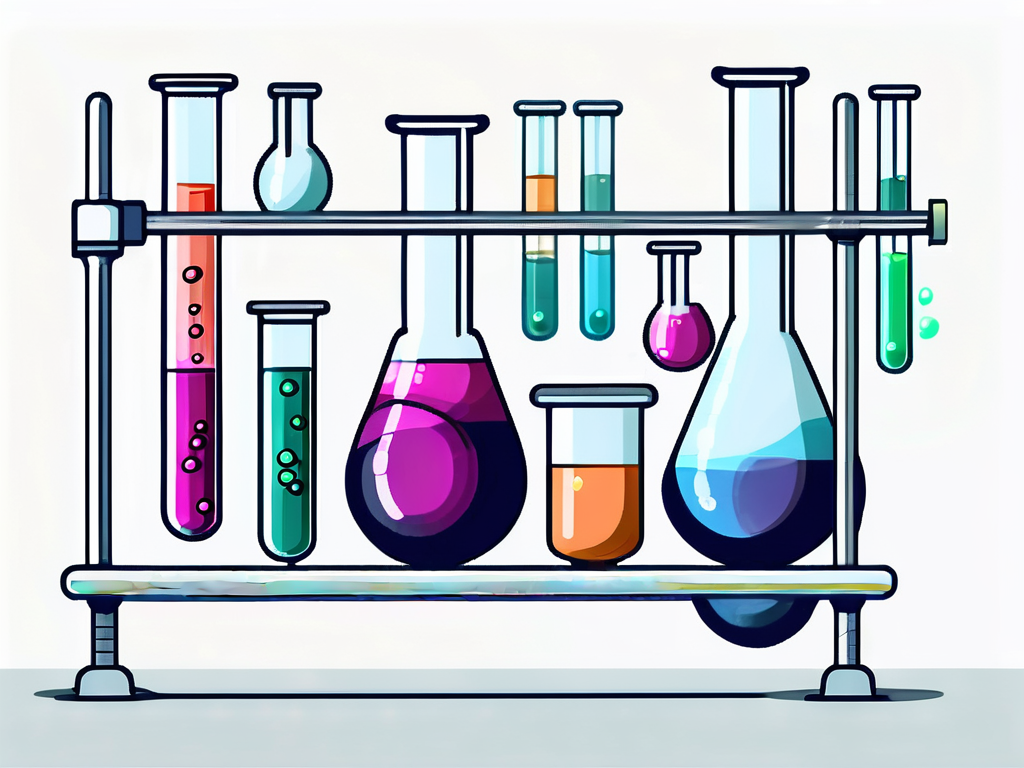Welcome to the fascinating world of compounding pharmacy, a unique field that combines the art and science of creating personalized medications. In this glossary entry, we’ll delve into the topic of chemical compatibility, a crucial aspect in the realm of compounding pharmacy.
Chemical compatibility refers to the ability of different substances to coexist without undergoing undesirable chemical reactions. In the context of compounding pharmacy, it’s about ensuring that the ingredients in a compounded medication can safely and effectively work together. This is a complex process that requires a deep understanding of chemistry, pharmacology, and patient care.
Understanding Compounding Pharmacy
Before we dive into the specifics of chemical compatibility, let’s take a moment to understand what compounding pharmacy is. Compounding pharmacy is a specialized field of pharmacy that involves preparing personalized medications for patients. These medications are made based on a practitioner’s prescription in which individual ingredients are mixed together in the exact strength and dosage form required by the patient.

This practice allows healthcare providers to tailor medications to individual patient needs, taking into account factors like allergies, dosage forms, and flavor preferences. It’s a practice that dates back to the origins of pharmacy, yet it continues to play a vital role in modern healthcare.
The Role of a Compounding Pharmacist
A compounding pharmacist is a highly skilled professional who has received specialized training in the art and science of compounding. They work closely with both the patient and the prescriber to customize medications to meet individual patient needs.
Compounding pharmacists use their expertise in drug properties, stability, and compatibility to create medications that are safe, effective, and tailored to the patient’s specific needs. They also ensure that the compounded medications comply with the regulations and standards set by the pharmacy regulatory authorities.
Types of Compounded Medications
Compounded medications can come in various forms, including creams, ointments, solutions, suspensions, capsules, tablets, suppositories, and even sterile preparations like eye drops and injections. The choice of dosage form depends on the patient’s needs, the nature of the medication, and the route of administration.
For instance, a patient who has difficulty swallowing pills may benefit from a liquid formulation of their medication. Similarly, a medication that causes stomach upset might be compounded into a topical cream that can be applied directly to the skin, bypassing the digestive system.
Chemical Compatibility in Compounding Pharmacy
Now that we’ve covered the basics of compounding pharmacy, let’s delve into the heart of our topic: chemical compatibility. In the context of compounding pharmacy, chemical compatibility is a critical consideration. It’s about ensuring that the ingredients in a compounded medication can safely and effectively work together.

Chemical compatibility is not just about avoiding harmful reactions; it’s also about ensuring that the active ingredients remain stable and effective throughout the shelf life of the medication. This requires a deep understanding of the physical and chemical properties of each ingredient, as well as how they interact with each other.
Factors Affecting Chemical Compatibility
Several factors can affect the chemical compatibility of a compounded medication. These include the chemical nature of the ingredients, their concentration, the pH of the formulation, the temperature, and the presence of catalysts or inhibitors.
For instance, some ingredients may be incompatible due to their chemical nature. An acid and a base, for example, will react to form a salt and water, which may alter the efficacy of the medication. Similarly, some drugs may degrade at high temperatures, while others may be sensitive to light or moisture.
Importance of Chemical Compatibility
Ensuring chemical compatibility is crucial for the safety and efficacy of compounded medications. Incompatible ingredients can react with each other, leading to changes in the physical and chemical properties of the medication. This can affect the stability, potency, and shelf life of the medication, potentially compromising its safety and efficacy.
Furthermore, incompatible reactions can lead to the formation of harmful byproducts. For instance, certain drugs can decompose to form toxic compounds when exposed to certain conditions or ingredients. Therefore, understanding and ensuring chemical compatibility is a critical aspect of compounding pharmacy.
Assessing Chemical Compatibility
Assessing chemical compatibility in compounding pharmacy involves a combination of theoretical knowledge and practical testing. Theoretical knowledge includes understanding the chemical and physical properties of each ingredient, as well as their potential interactions.
Practical testing, on the other hand, involves conducting stability studies to observe the physical and chemical changes in the compounded medication over time. These studies are typically conducted under various conditions to simulate the potential scenarios in which the medication will be stored and used.
Stability Studies
Stability studies are a key part of assessing chemical compatibility. These studies involve monitoring the physical and chemical changes in a compounded medication over time. This can include changes in color, consistency, pH, and the concentration of the active ingredients.
Stability studies also involve testing the medication under various conditions, such as different temperatures, humidity levels, and light conditions. This helps to identify any potential stability issues and determine the appropriate storage conditions and shelf life for the medication.
Compatibility Charts
Compatibility charts are another useful tool for assessing chemical compatibility. These charts provide information on the compatibility of various drugs and excipients (inactive ingredients used in drug formulations). They can provide a quick reference for identifying potential incompatibilities and guiding the formulation process.
However, compatibility charts should not be used as the sole basis for determining compatibility. They should be used in conjunction with other methods, such as stability studies and consultation with experienced compounding pharmacists or pharmaceutical scientists.
Ensuring Chemical Compatibility
Ensuring chemical compatibility in compounding pharmacy involves a combination of careful ingredient selection, proper formulation techniques, and rigorous testing. It’s a complex process that requires a deep understanding of chemistry, pharmacology, and patient care.

Compounding pharmacists play a crucial role in this process. They use their expertise in drug properties, stability, and compatibility to create medications that are safe, effective, and tailored to the patient’s specific needs. They also ensure that the compounded medications comply with the regulations and standards set by the pharmacy regulatory authorities.
Ingredient Selection
The selection of ingredients is a critical step in ensuring chemical compatibility. This involves choosing ingredients that are compatible with each other and suitable for the intended use of the medication. It also involves considering factors like the chemical nature of the ingredients, their concentration, and the pH of the formulation.
For instance, certain drugs may require a specific pH range for optimal stability and efficacy. In such cases, the pharmacist may need to adjust the pH of the formulation using suitable buffering agents. Similarly, some drugs may be sensitive to light, heat, or moisture, requiring the use of appropriate packaging and storage conditions.
Formulation Techniques
Proper formulation techniques are also crucial for ensuring chemical compatibility. This involves using the right equipment and procedures to mix the ingredients, as well as conducting appropriate quality control tests to ensure the consistency and quality of the final product.
For instance, some ingredients may need to be mixed in a specific order to prevent undesirable reactions. Others may require special handling or storage conditions to maintain their stability and efficacy. Quality control tests can include checks for uniformity, pH, and the concentration of the active ingredients.
Testing and Quality Control
Testing and quality control are essential aspects of ensuring chemical compatibility. This involves conducting stability studies to assess the physical and chemical stability of the compounded medication over time. It also involves conducting routine quality control tests to ensure the consistency and quality of the final product.
For instance, a stability study may involve testing the medication under various conditions to identify any potential stability issues. Quality control tests can include checks for uniformity, pH, and the concentration of the active ingredients. These tests help to ensure that the compounded medication is safe, effective, and of high quality.
Conclusion
Chemical compatibility is a critical aspect of compounding pharmacy. It’s about ensuring that the ingredients in a compounded medication can safely and effectively work together. This requires a deep understanding of the physical and chemical properties of each ingredient, as well as how they interact with each other.
Ensuring chemical compatibility is a complex process that involves careful ingredient selection, proper formulation techniques, and rigorous testing. It’s a process that requires the expertise of a compounding pharmacist, who plays a crucial role in creating medications that are safe, effective, and tailored to the patient’s specific needs.
So, the next time you receive a compounded medication, you can appreciate the art and science that goes into ensuring its chemical compatibility. It’s a testament to the skill and dedication of compounding pharmacists, who work tirelessly to provide personalized medications that meet the unique needs of each patient.



